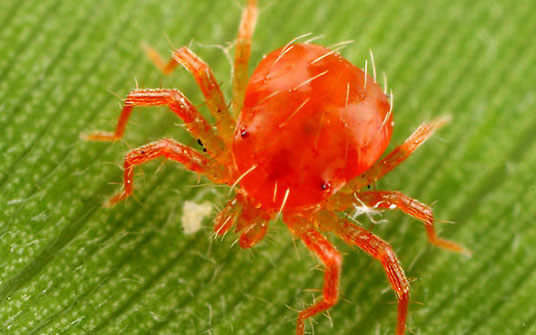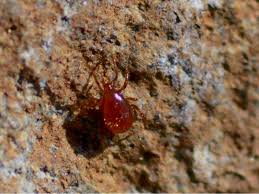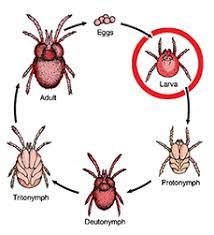MITES
These tiny pesky pests are 1/8 inch or less in length. Plaster beetles can be yellow-brown, red-brown, dark brown, or black. Their ridged wing covers have rows of small holes on them. As the wing covers remain folded over the back of the plaster beetles, it appears as if they have perforations on their backs.
Plaster Beetle Habitat and Food Source
The plaster beetle can be found living outside in debris, under logs, and in tree stumps. Occasionally, plaster beetles like to hole up in subterranean termite nests where they find an appetizing combination of mold and fungus to munch on. They also like cheese, fruit, and wet carpet. Plaster beetles enjoy eating fungus, mildew, and mold growing on wet lumber and straw too. They like hanging out in store food that has gone moldy but does not cause damage to the food itself. Within the home, plaster beetles hang out in dank basements, drippy attics, and moist crawl spaces. They especially love leaks around plumbing fixtures such as bath traps. Plaster beetles are weak, erratic fliers. They can be found flitting around light fixtures, sinks, and windowsills. Occasionally plaster beetles will congregate inside homes following lots of rain.
Plaster Beetle Life Cycle
Female adult plaster beetles lay eggs singly. Plaster beetles complete their life cycles in about13 to 28 days or up to 5 weeks. Their quick breeding cycle can result in a huge infestation of plaster beetles with hundreds emerging from the breeding sites in the walls into plain sight.
Plaster Beetles and Humans
Plaster beetles can cause a bit of a rash on the skin, but are otherwise harmless to humans. While they only eat fungus, mildew, and mold, but it can be scary to people when large numbers of beetles in the hundreds or thousands gather at windows where they are attracted to the light.
Plaster Beetle Control
- Plaster Beetle Identification: A professional should come and positively identify the plaster beetles with close examination and the areas where infestations are located. A professional can advise you on how to better prevent the propagation of plaster beetles in your home by making the condition as unfavorable as possible for these moisture-loving insects.
- Insecticide: An exterminator can apply a granular or liquid insecticide outdoors to keep plaster beetles from invading or inject wall voids with a non-residual aerosol, followed by a positively-charged boron based duct, a long-term fungicide and insecticide. Sprays containing Lambda-cyhalothrin, deltamethrin, Bendiocarb. These insecticides are biodegradable, nearly odorless, and not highly toxic to mammals.
- Removal of Plaster Beetles: Plaster beetle carcasses can be removed with a vacuum. The areas treated with insecticide should not be sanitized until 3 weeks following the exterminator’s visit to make sure all the adults are terminated.
Personal Treatment
- Dry it! Use a dehumidifier to control the moisture in your home. This will eradicate the dampness that encourages mold growth. Continuous use of dehumidifiers should prevent further migration of pests. Repair plumbing problems that could be creating leaks. Check downspouts and gutters and make sure they drain away from the foundation of the house. Make sure crawlspace vents are not blocked so that there is plenty of air circulation within.
- Shut it! Close up holes and entryways plaster beetles could use to access your home. Make sure exterior doors shut tightly. Reapply new weather-stripping if it is broken or missing. Repair screens on windows and vents on crawlspaces.
- Suck them up! Vacuum up any adult beetles you find in your home.
- Turn up the heat! Heating the environment above 110 degrees Fahrenheit/43 degrees Celsius will kill full-grown plaster beetles in a day or less.


